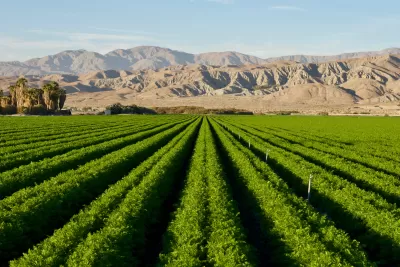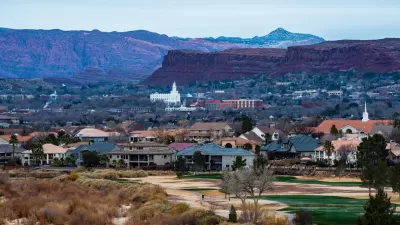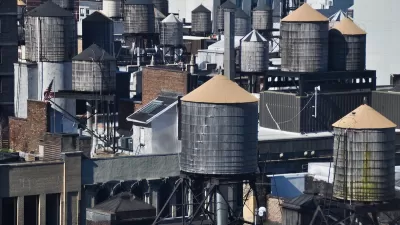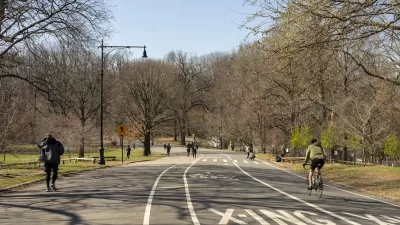Will banning lawns and limiting water use be enough as new communities continue to sprout up across the drying west?

Writing in Circle of Blue, Brett Walton describes the growing water conservation movement in the American Southwest, where booming populations and strained water supplies are bringing the urgency of the water crisis to the forefront.
One by one, cities such as Tucson are banning ‘ornamental grass’ and home lawns, while others are cutting off water supplies to unincorporated communities.
According to John Berggren, a water policy analyst with Western Resource Advocates, “There’s a growing recognition that there are actually ways to allow growth to happen, that don’t really increase the amount of overall water you need” through landscaping regulations, zoning codes, and other policy levers. “We don’t have to restrict growth, we just have to shape it and make sure water efficiency is embedded throughout the entire development process.”
While developers are hanging on to this promise of infinite growth with the right technological and regulatory policies, the cost of water continues to rise. Meanwhile, agriculture remains the biggest user of water in the state.
FULL STORY: Say Goodbye to Lawns in Drying U.S. West

Planetizen Federal Action Tracker
A weekly monitor of how Trump’s orders and actions are impacting planners and planning in America.

Chicago’s Ghost Rails
Just beneath the surface of the modern city lie the remnants of its expansive early 20th-century streetcar system.

San Antonio and Austin are Fusing Into one Massive Megaregion
The region spanning the two central Texas cities is growing fast, posing challenges for local infrastructure and water supplies.

Since Zion's Shuttles Went Electric “The Smog is Gone”
Visitors to Zion National Park can enjoy the canyon via the nation’s first fully electric park shuttle system.

Trump Distributing DOT Safety Funds at 1/10 Rate of Biden
Funds for Safe Streets and other transportation safety and equity programs are being held up by administrative reviews and conflicts with the Trump administration’s priorities.

German Cities Subsidize Taxis for Women Amid Wave of Violence
Free or low-cost taxi rides can help women navigate cities more safely, but critics say the programs don't address the root causes of violence against women.
Urban Design for Planners 1: Software Tools
This six-course series explores essential urban design concepts using open source software and equips planners with the tools they need to participate fully in the urban design process.
Planning for Universal Design
Learn the tools for implementing Universal Design in planning regulations.
planning NEXT
Appalachian Highlands Housing Partners
Mpact (founded as Rail~Volution)
City of Camden Redevelopment Agency
City of Astoria
City of Portland
City of Laramie





























